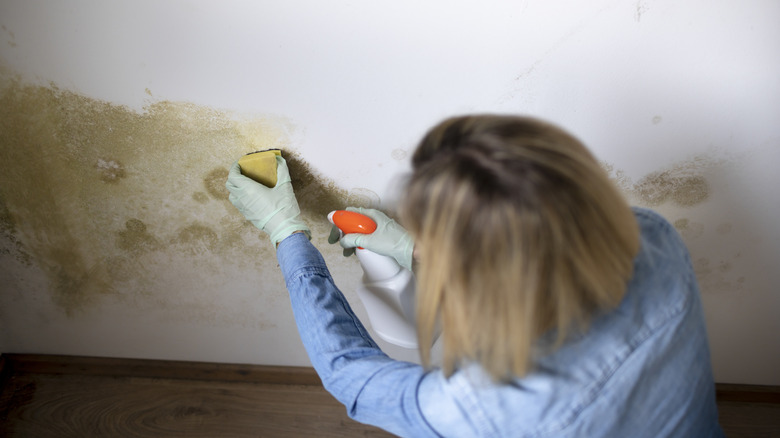Why You Should Never Try To Paint Over Mold
Painting is one of the most affordable ways of giving your home interior a much-needed facelift. And, compared to other home improvement tasks, it's a project that can be completed in a relatively short period of time. But what should you do if you discover mold on the surface you intend to paint? While, black mold patches on the wall, or any other surface for that matter, can be an eyesore — sadly, the problems go beyond aesthetics.
Mold is also associated with health risks and can lead to severe respiratory issues, especially in children and pets. Moreover, in severe cases, it can cause damage to the structure of the house. It might seem like a good solution to just paint over mold patches. However, the truth of the matter is that without addressing the root course of the problem, the mold will soon re-emerge. Here are the reasons why covering molds with a fresh coat of paint is never a good idea.
Paint won't smother the mold
Because mold is a living organism, you might think that painting will smother it and prevent it from returning. Unfortunately, this isn't the case. Common household paint is porous and will not limit the access of oxygen to the mold. Although the paint may cover the ugly black stains temporarily, the mold will continue to grow underneath, causing the paint to bubble and peel.
While there are some brands of paint that claim to be mold-resistant, they work by preventing the growth of new mold and not by killing any that is already present. If you are planning on buying a property, and you suspect that the owner may have painted over areas of mold then it's recommended to have the home inspected. Otherwise, you may be dismayed to find that mold patches begin to appear on the walls shortly after you move in.
You need to address the root cause first
Before painting, the first task should be to rid the surface of all mold. Depending on the level of infestation, this might be something you can do yourself. Bleach is effective at killing spores on the surface and removing the dark stain. However, if the surface is porous, like wood or drywall, you want a substance that will soak deeper into the material and eliminate the spores existing underneath, such as vinegar. If the mold patch is greater than 10 square feet, the Environmental Protection Agency recommends hiring a professional.
After mold remediation, you can now be more deliberate with your choice of paint to make sure it doesn't grow once again. It is a good idea to first prepare the surface with a mold-resistant primer, before finishing up with the mold-resistant paint. In addition, if you are looking to paint a surface that is prone to moisture like the bathroom or kitchen, it might be better to choose a water-resistant paint as well.


